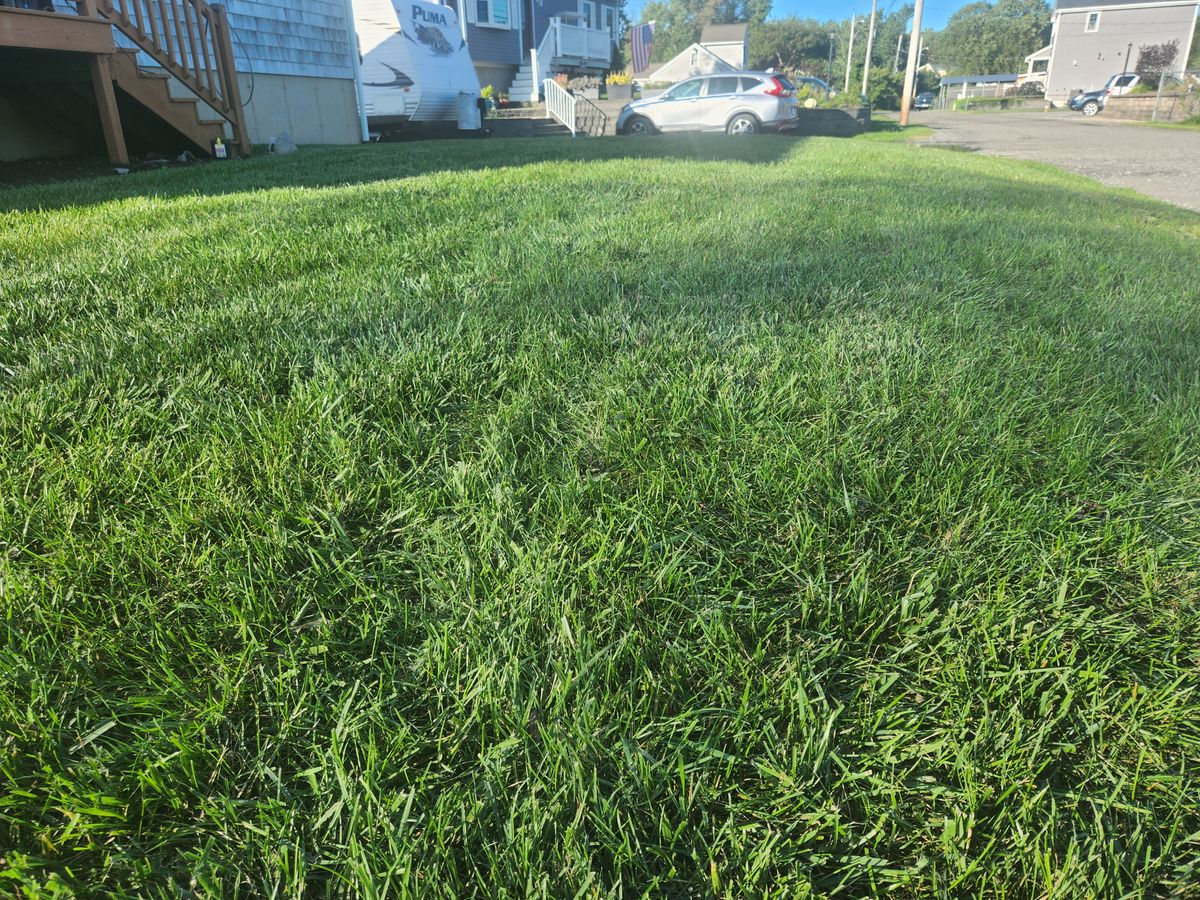As a homeowner, having a healthy and vibrant lawn is a top priority. In order to achieve this, a proper fertilization program is crucial. However, many homeowners often overlook the importance of the soil’s pH level, in which lime plays a crucial role.
Not only does the correct lime application help balance the soil’s pH level, but it also has other benefits that aid in the overall health and color of your turf. In this blog, we will be discussing the two types of lime for lawns and their benefits, the importance of correct lime application, and how lime complements your turf fertilization and weed control program. .
The Two Types of Lime for Lawns: The first type of lime for lawns is called calcitic lime, also known as ground limestone. This type of lime is made up of calcium carbonate and is the more common form of lime used for lawns. The second type is dolomitic lime, which is made up of calcium magnesium carbonate. To choose the correct type of lime, it is important to conduct a soil test to determine the soil’s pH level and nutrient needs.
2. The Importance of Correct Lime Application: Correct lime application is crucial to the health of your lawn. If the soil’s pH level is too low or too high, this can lead to nutrient deficiencies or toxicity, which can stunt growth and cause discoloration. By adding the correct type and amount of lime, the soil’s pH level can be balanced, allowing grass roots to properly absorb needed nutrients. It is recommended to apply lime in the fall or spring, as extreme temperatures can cause rapid changes in pH levels.
3. The Benefits of Lime for Lawns: Aside from balancing pH levels, lime has other benefits for turf health. Lime helps reduce soil compaction, allowing roots to grow deeper and access water and nutrients more easily. It also aids in the breakdown of organic matter, promoting healthy soil structure. In addition, lime can enhance the effectiveness of herbicides and other weed control programs, improving overall turf health and color.
4. How Lime Complements a Turf Fertilization and Weed Control Program: When used in conjunction with a proper fertilization and weed control program, lime can greatly benefit the health and color of your turf. By balancing the soil’s pH level, grass roots can absorb nutrients more efficiently, leading to improved growth and color. In addition, lime can enhance the effectiveness of herbicides, allowing for better weed control.
5. Factors to Consider When Applying Lime: When applying lime, there are several factors to consider. The first is the type and amount of lime needed, as determined by a soil test. It is also important to consider the soil type and current nutrient levels, as different types of soil may require varying amounts and types of lime. Lastly, it is crucial to follow recommended application rates and timing, as incorrect lime application can have adverse effects on the turf’s health. Conclusion: In conclusion, correct lime application is crucial to maintaining a healthy and vibrant lawn.
By balancing the soil’s pH level, improving soil structure, and enhancing weed control, lime plays a vital role in turf health and color. When used in conjunction with a proper fertilization and weed control program, the benefits of lime can be maximized. If you are unsure about the correct type or amount of lime needed for your lawn, consider consulting with a professional to ensure proper application and optimal results.

